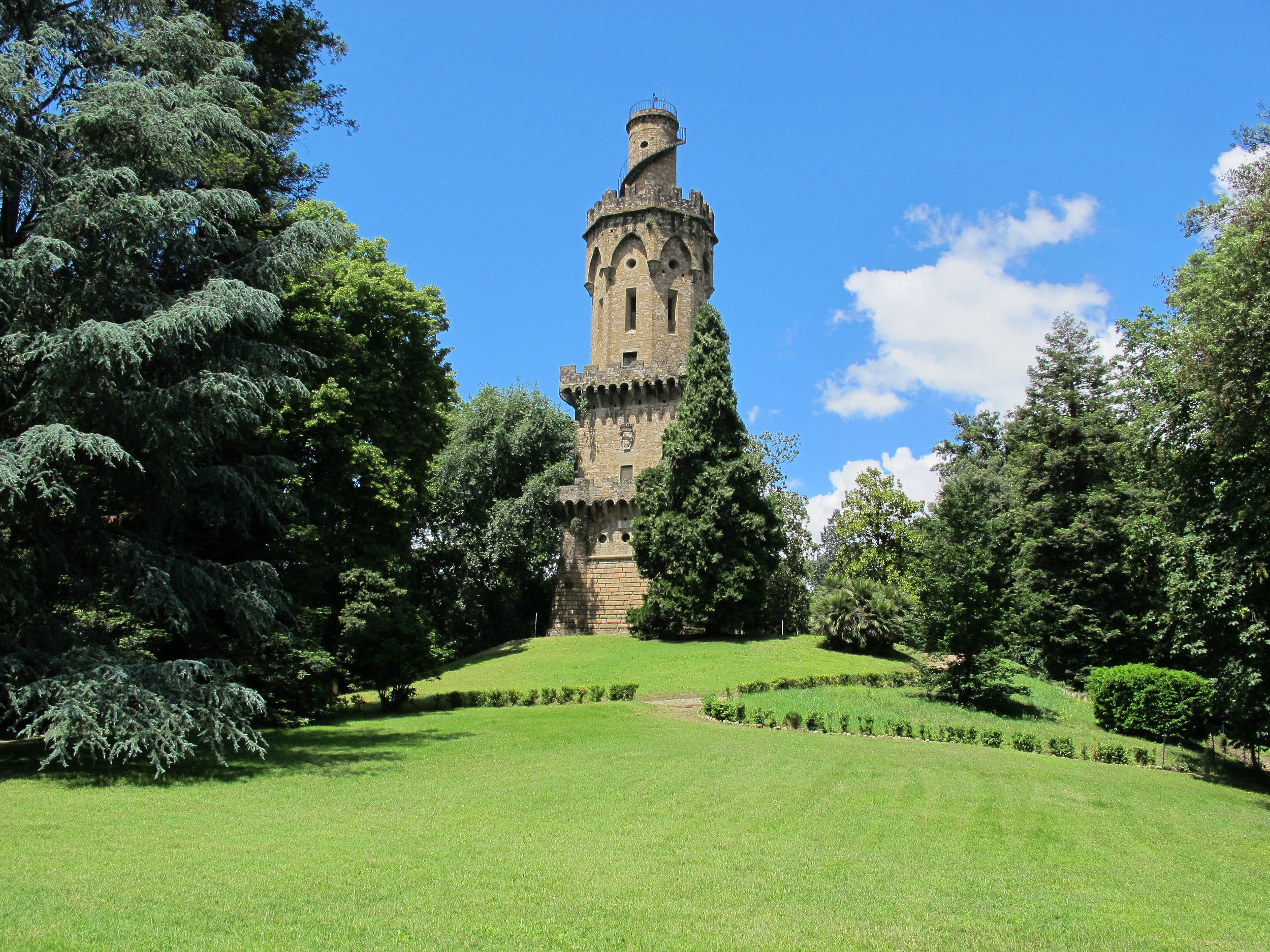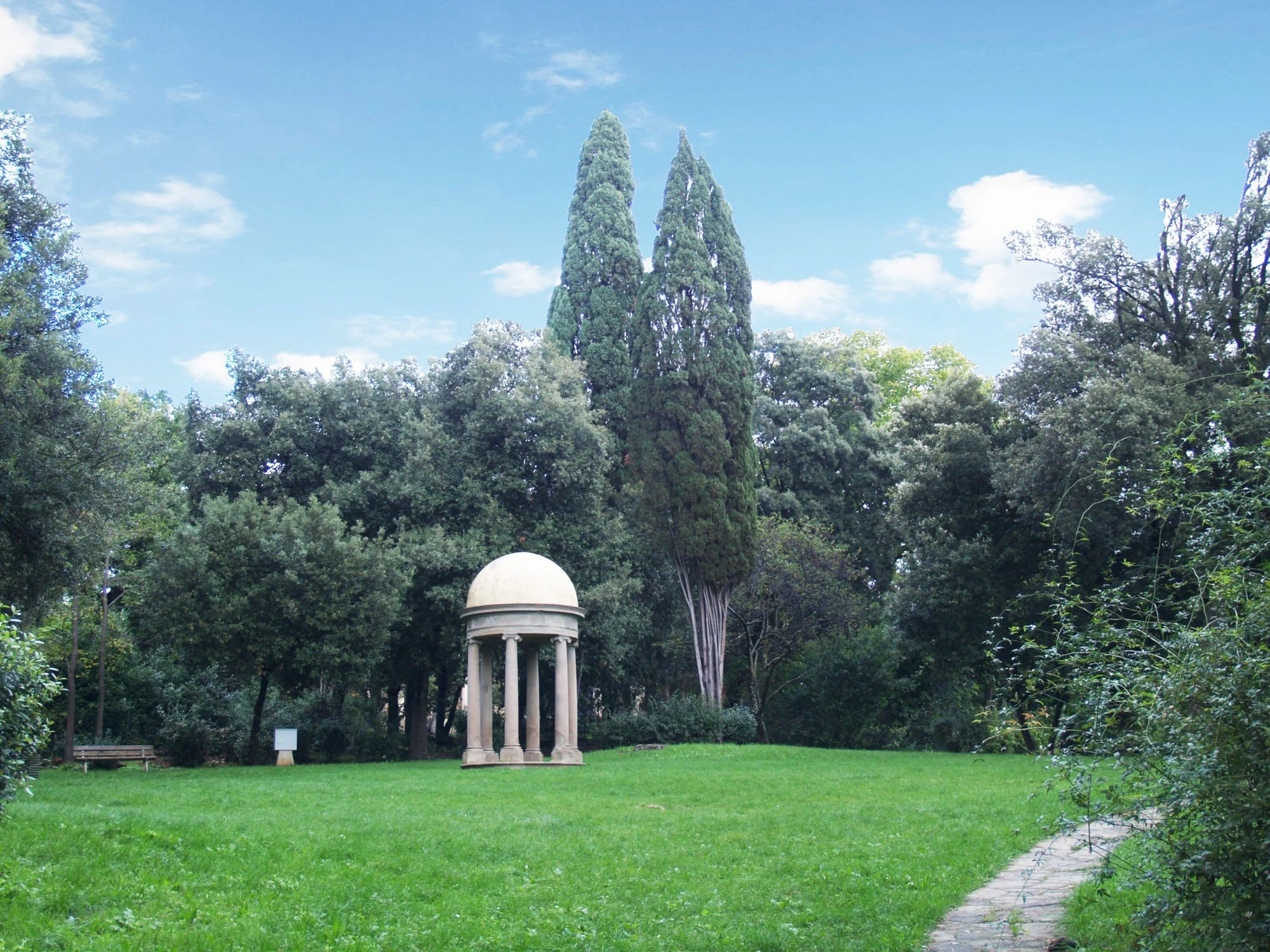Giardino delle Rose/Rose Garden
Spring never fails to make me pine for the greatness of nature. When the scorching sun bounces off Florence’s buildings and crowds are too much to bear, there is nothing like seeking refuge among the lemon trees and cypresses, taking in the chirruping of birds and the twinkling of waterworks, breathing in the mingling scent of grass and sun-caressed flowers.
The gardens of Florence are among the city’s finest gems—not only because of their beauty, but because of their tranquillity. With all of Florence’s art, food and wine, many people forget to check out the city’s gorgeous, and historic, gardens. Or if they do, they only pop into the usual suspects (Boboli Gardens, anyone?). But we’re not here to see the hits, we’re here to skip the lines and dodge the tourist masses, remember? That’s why we’ve put together a list of our favorite secret not-so-secret Florentine gardens.
So get off the beaten path, pack a light lunch (and a blanket)… and head off to smell the roses with us!
Giardino delle Rose e Giardino dell’Iris
Our first garden is actually two gardens located within a hair’s breadth of each other few steps from Piazzale Michelangelo.
The Giardino delle Rose features 350 types of roses. It was designed by Italian architect Giuseppe Poggi (the same architect behind the aforementioned Piazzale Michelangelo) and was first called the “podere di San Francesco” as it belonged to Filippini monks. Attilio Pucci later divided it into the terraces that give life to a beautiful rose collection.
In 1895, the garden was opened to the public for the Festival of Art and Flowers. The French-style garden was the perfect setting for a weekend stroll among the city’s elite. More recently, in 1998, Japanese architect Yasuo Kitayama and the Kodai-ji Zen temple donated the Japanese Shorai oasis, a gift from Florence’s sister city, Kyoto. This Japanese oasis gives the European garden a splash of East Asian flair.
Close by, the Giardino dell’Iris is only open from late April to late May. The iris has been the symbol of Florence for a thousand years so it is not at all surprising that an entire garden has been dedicated to this beautiful flower.
Every year iris growers from around the world send their best flowers to the garden, where they are planned and cultivated for 3 years before they are reviewed by an international jury. Prizes are awarded based on specific characteristics of a particular type of flower and the first prizewinner is awarded a gold Florin. The iris that best approaches the red on the coat of arms of Florence is also awarded a special prize. Until now, no one has succeeded in growing the exact correct color red.
Nearest landmark: Piazzale Michelangelo
Giardino del Palazzo della Gherardesca
One of the largest private garden in Italy, Giardino del Palazzo della Gherardesca is accessible to guests of the Four Seasons and the restaurant/cafe. The building itself is one of the first examples of an urban villa - built between 1473 and 1480 for Bartolomeo Scala – the Chancellor of the Republic who was the scholar and diplomatic confidant under Lorenzo the Magnificent.
The present park was designed in the 18th century and is a beautiful mix of more formally designed and less formal areas. Along with an incredible collection of azaleas, there are 26 art installations, fountains and sculptures, but two are crowd favorites. One is the Anfiteatro dell’Ananas (Pineapple Amphitheatre) - so named for its unusual shape. The other is the Lunghissima strada nel bosco (Forest path), which features mirrors hidden among the trees for an otherworldly experience.
Address: Access via The Four Seasons hotel, Borgo Pinti 99
Giardino dell'Orticoltura. Photo: Visit Tuscany.
Giardino dell'Orticoltura and Giardino dei Giusti
Created as an ‘experimental garden’ in the middle of the 19th century, the Giardino dell'Orticoltura in northern Florence is a local favorite and home to one of Florence’s more unusual architectural treasures - an impressive steel and glass pavilion built by Giacomo Roster in 1879 for the Società Toscana di Orticoltura (the Tuscan Horticultural Society). Today, the greenhouse is used today for celebrating events, parties, food and cultural activities, while the garden houses the Municipal Library of Horticulture, which has been hosting horticultural exhibitions in order to promote the ‘knowledge of good horticultural practices’ since 1862. The feeling here is that of a ‘neighbourhood park,’ with a bar with terrace frequented mostly by university students.
The nearby Giardino dei Giusti is significantly younger, opened in 2007, and divided into two parts. In one section, you’ll find a 80+-year-old carob tree, the symbolic tree of the Garden of the Righteous in Jerusalem, transplanted here along with a crape myrtle from the early 1960s. In the lower part of the garden, you’ll find a bunch of different plants designed to guarantee a rotation of colors, fragrances and shapes throughout the year.
Address: Via Vittorio Emanuele II
Thursday flower market in Piazza della Repubblica
If you find yourself in Florence centro on a Thursday morning, you may notice the beautiful flowers all the Florentines are carrying home to their palazzi. They've already been to the Thursday Flower Market - the place to go for fresh cut flowers. The market starts early and all the cut flowers are pretty much sold out by lunch.
Even if you’re not looking to buy some blooms, the market is still a really great spot for a stroll as all those flowers, naturally, make a beautiful corner of the city all the more beautiful.
Address: Under the portici off Piazza della Repubblica
Giardino Torrigiani. Photo: Wikipedia.
Giardino Torrigiani
Giardino Torrigiani is the largest privately owned garden in Europe situated within city boundaries. First opened in the 16th century as a botanical garden, it experienced a bit of a golden age in the early 19th century when the Marquis Pietro Torrigiani started snapping up the surrounding land to add to the garden.
He called on the architect Luigi de Cambray Digny to make him an English-style garden that cleverly combined natural elements with artificially made landscaping and a healthy dose of esoteric features. But the highlight wasn’t designed by Digny at all, but rather architect-engineer Gaetano Baccani who created a neo-gothic tower that alluded to the family crest. Almost 72-feet high, it housed a collection of astronomical instruments, a library and a terrace from which to study the heavens.
On the nature side of things, the garden is well known for its extraordinary wealth of tree and plant species from all parts of the globe. In fact, the great botanist and mycologist Pier Antonio Micheli (co-founder of the Italian Botanical Society in 1716) worked here, and the Torrigiani Malaspina and the Torrigiani Santa Cristina families continue to support its growth as the garden’s patrons.
Address: Via dei Serragli, 144
Giardino del Borgo
This little treasure is really off the beaten track. It was created by Ser Alamanno Salviati, who lived in via Ghibellina in the nearby Salviati palace as a garden for exotic and rare plants. In fact, this spot was home to the first jasmine ever planted in Tuscany - brought from Catalonia, Spain. Salviati paired the blooms with grape vines for his own sweet wines and an array of other medicinal and aromatic plants, a fountain and a hot house for citrus fruits.
In 1794, Cardinal Gregorio, the last descendant of the family, passed the property to Prince Camillo Borghese, son of his sister Marianna. The architect Gaetano Baccani transformed the garden into more of a countryside park with winding paths, thickets with tall trees and a large oval flowerbed. A lot of this was lost when the Municipality of Florence took the reins, but the oval flowerbed and a section of the remaining garden is still open to the public today.
Address: Borgo Pinti
????? The fountain at Giardino Frescobaldi. Photo: Wikipedia.
Giardino di Palazzo Frescobaldi
The Frescobaldi family is one of the oldest and most important families of Florence and its family garden is perhaps one of the best places to escape the heat and city noise.
First created in the 16th century, Giardino di Palazzo Frescobaldi has changed quite a bit over the centuries. Originally divided into four parts with a central baroque fountain, it now features a large grassy area with a giant Magnolia tree outlined by a winding drive decorated with azaleas and a picturesque stone staircase leading up one side. The beautiful Church of Santo Spirito with its massive walls and the bell tower watches over the garden along with a stone statue of Pan and two guard dogs remain. The garden also has two modern bronze sculptures by Arnaldo Pomodoro.
Address: Via Guicciardini, 15
Orti del Parnaso
The name Parnaso (Parnassus) derives from a mountain in Greece thought to be home to the god Apollo and his nine Muses. In Greek mythology, Apollo defeated Python - a giant dragon snake that either would not let him found his oracle, being accustomed itself to giving oracles, or because it had persecuted Apollo's mother, Leto, during her pregnancy. Either way, the snake bites the dust and Apollo founds the Pythian games, precursors of the Hellenic Olympic games. This garden’s version of Python isn’t as fantastical but it’s still pretty impressive. Created in 1990 by Marco Dezzi Bardeschi, it wraps around the stairs leading to the garden, capturing Florence in its icy glare.
Address: via Trento 11
Secret olive garden within Villa Fabbricotti
Parco Villa Fabbricotti
Parco Villa Fabbricotti is a large public park that’s a favorite with families and dog walkers. It has a cute little coffee bar and a play area, as well as some beautifully old horse chestnuts, dwarf palms, cedars and Judas trees. No Italian park would be complete without a selection of statues and Parco Villa Fabbriciotti doesn’t disappoint. Keep an eye out for the two guard lions and the small Pantheon-style chapel.
Address: Via Vittorio Emanuele II, 64











